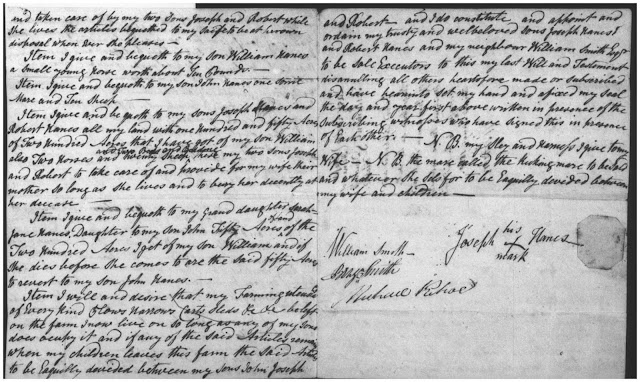My relationship: Me > William R. Compton (father) > Helen Rosamond Tubbs (my paternal grandmother)
Helen Rosamond Tubbs was the 4th and last child born to
Samuel Murray Tubbs and
Rosamond Lillis Brooks on December 8, 1877 in Elmira, New York. She was educated at The Academy of Our Angels in Elmira. She worked as a stenographer in the office of
William R. Compton Sr. at his realty company. She also worked in the same capacity in his new position as US Marshall in 1898. They married on April 27, 1899.
They initially lived in Horseheads, where my father,
William R. Compton, Jr. was born. They then moved to Elmira into a new home on College Avenue. In a biography of her husband, William R. Compton, in 1902, she was described as "a lady of superior culture and refinement, presiding with gracious hospitality over their pleasant home".
Upon the death of her husband in 1912, she apparently struggled financially and had to sell the home in Elmira, moving to Hudson Falls, New York where she is listed in the 1920 census as a "county social worker". She met and married
Orson Culver Richards in that area and married him in Elmira on November 15, 1922. Orson was the civil engineer for Hudson Falls Village, the township of Kingsbury, Washington Co., NY.
 |
| 1922 passport photo |
On Feb. 1, 1926, she and Orson are listed as Minnewaska ship arrival passengers from New York into London. On 16 Mar 1926, she and Orson are listed as arrival passengers to New York City from Cherbourg, France on the ship Ausonia.
In the Hudson Falls Village 1930 US Federal Census the following listing appears:
Richards, Orson, head, age 56, civil engineer, Washington County
Richards, Helen R., wife, age 52, occupation - none
Compton, Beulah, stepdaughter-in-law, age 26, high school teacher
(married to my father William R. Compton, Jr.)
 |
| Orson C. Richards |
They had no children, but lived in Hudson Falls at 30 River Street, a happily married couple. They had a summer cabin on Lake George.
An article from the Times Record, Troy, New York, Feb. 22, 1949 reads:
"Hudson Falls police are trying to catch hoodlums who raised havoc after entering the home of Mr. and Mrs. Orson C. Richards of 30 River Street, who are vacationing in Florida. The prowlers gained entry by breaking a pane of glass in a kitchen window and when inside they dumped drawers in all rooms of the house, opened cans of food and broke radios."
I have a letter dated June 25th 1949 addressed to Mrs. William R. Compton (my mother), McLean, Virginia mailed from Hudson Falls, NY:
"Dear Norma, Thank you so much for the letter and the snapshot of Billy [me]. He has grown and developed a great deal in the last three months, but he keeps his smiling side up anyway. He certainly leans towards the distaff side when it comes to ringlets for I haven't seen any curls for at least two generations in my family. The doctor wants me to be out of doors all the time possible so that is where I try to be and that is no hardship. We have little pink climbing roses, a few other flowers, and the rest taken up with Maidenhair fern. All the fall flowers may burst open and surprise us. We still feel the effects of those terrible boys [see article above]. Maybe we may get over it in time, but a southern trip is out of the question this winter as things look now. Love to the whole family in which Pop joins. Sincerely, Mother. (89 degrees in the shade at 2 pm)
I have a letter from Helen to her son William Jr. dated July 3, 1952:
"Dear William - have been reading your recent letters and thinking about you, my little boy, and now 50 years old the ninth. You don't know what a comfort you are to me. Of course, you know that I love you but you don't know how much and how I long to see you. For your birthday present I am sending you two little diamond shirt studs which were your father's. While they are not used as they once were, I think you will be glad to have them. Just drop me a line often and tell me you are all well, it helps me very much to hear from you. With my love to you all, Mother."
[I have a few other items that belonged to her in my possession. These include a Bible given to her by Amy Norris Compton on December 25, 1901. I have a certificate from The National Society of the Daughters of the American Revolution dated 21 Feb 1910 for Mrs. Helen R. Tubbs Compton, Chemung Chapter, descent from
John Tubbs, soldier Revolutionary War. I also have a set of hairbrushes; three with "T" engraved on them and one with "HRT". I have an antique cradle from her great grandfather,
Dr. Theseus Brooks. My mother has a set of silverware of the Tubbs family with "T" on them. I also have several photographs of Helen in her younger years, as well as of the home in Elmira.]
She died on January 9, 1953 in Hudson Falls. My father went to her funeral and left my mother to care for Anne (my sister) and me at home. I remember her vaguely coming to visit our home in McLean, probably in 1952 when I was 4. I only remember having a special dinner in our formal dining room with her and Orson. I remember her very gray-white hair, too. I remember Orson Richards sitting in the red leather chair in our den and me sitting and playing on his lap. I remember him smoking a pipe, too.

















































